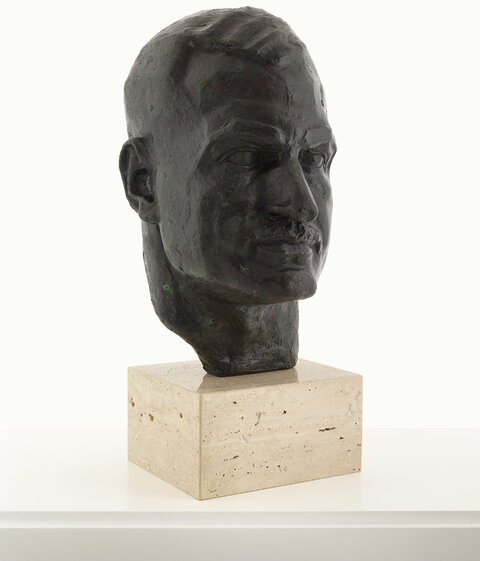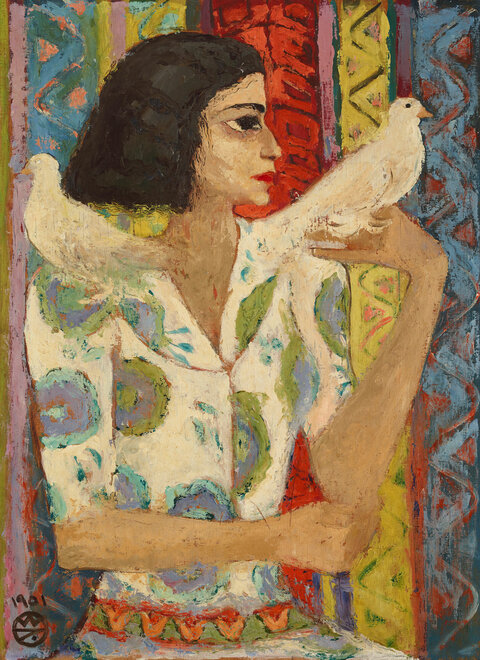The oeuvre of Gamal El-Seguini corresponds to a period in Egypt when the path of art and politics coincided. In 1952, the Revolution, led by the Free Officers, overthrew the monarchy ruled by King Farouk (1920-1965) and put General Gamal Abdel Nasser (1918-1970) in power. In Nasserist politics, it was fundamental to elevate the local and popular culture in opposition to the imperialist culture from the West.
Gamal Abdel Nasser personally concerned himself with the cultural development of the country. During the 1950s until the late 1960s, the state progressively replaced wealthy art patrons; it imposed itself as the great promoter of artistic, musical, cinematographic, and literary creation.
In the 1950s, Gamal El-Seguini’s works embraced the political change and the artistic insurgence taking place in Egypt. He created sculptures adopting a unique iconographic lexicon focusing on subjects that addressed the Egyptian motherland or the Arab-Israeli conflict.
El-Seguini addressed political topics that affected Egypt. For example, the 1956 Suez Crisis, during which Israel, France, and Britain invaded Egypt, aiming to topple President Gamal Abdel Nasser after he nationalized the Suez Canal Company. And, the 1967 Arab-Israeli war or the Six-Day War known as the defeat - Al-Naksa in Arabic. Back then, Israel attacked Egypt, Jordan, and Syria, capturing the Sinai Peninsula, the Golan Heights, the Gaza Strip, the West Bank, and East Jerusalem.
Gamal Abdel Naser, then Egypt's revolutionist president (from 1956 to1970) and a unique pan-Arabist leader, was central to some of El-Seguini's artistic productions. An indicative example is El-Siguini's bronze sculpture Untitled,1952, depicting Gamal Abdel Nasser's bust; the work is part of the Dalloul Art Foundation's collection in Beirut.
El-Siguini executed Nasser's bust meticulously, paying careful attention to minute details. For instance, the bust’s facial countenance reflects the Egyptian president's charismatic nature and self-pride. More importantly, the three-dimensional portrait highlights Nasser's piercing eyes and distinctive frowning expression where the lips seem tightened, the eyebrows are brought together, and the forehead is somehow wrinkled.
Untitled, 1952 (Gamal Abdel Nasser's bust) underscores the role of power in connecting the masses to its political leader. Adopting bronze as a medium emphasizes Nasser's strength, lending the leader a rough and massive appearance – portraying Nasser as a modern Egyptian leader with big ambitions. Certainly, the artist underscored the factor of power, presented to both a local and an international audience. The political leader is presented as an 'exemplary personage' who stands out by his imposing presence, charisma, and revolutionary actions.
Signed and dated on the neck






